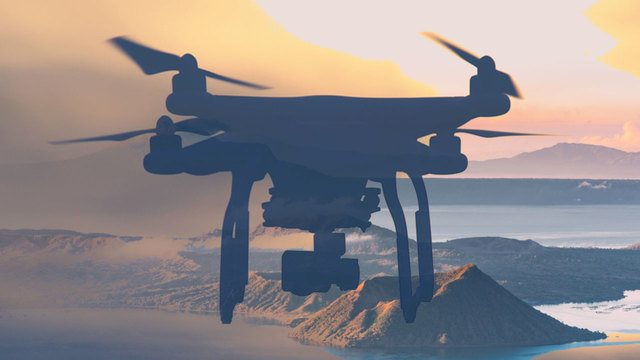Technology should be the first responder, and sometimes the sacrificial part, that provides society with the means to get through disasters with as few casualties as possible.

In light of the eruption of Taal Volcano, I acknowledge that technology also has one more part to play, especially when it comes to disaster response.
It should be the first responder – and sometimes the sacrificial part – that provides society with the means to get through disasters with as few casualties as possible.
In the case of drone technology, these unmanned aerial vehicles (UAVs) make the hard work of getting information before, during, and after a disaster easier.
Throwing drones at volcanoes
Many drones have been sacrificed to get more vital information out to help in rescue, recovery, and prevention efforts.
In 2015, Sam Cossman operated camera-mounted drones to capture high-definition images of the spectacular (yet obviously dangerous) Marum Crater in Vanuatu. Cossman and his team piloted drones over a 12-kilometer wide caldera in the midst of toxic gases and lava, and lost two of the drones in the process of gathering the footage below.
In 2018, during the Kilauea volcanic eruption in Hawaii, drones and mapping software were used to not only track lava flow, but also to predict where the lava would go.
Drones were also used to help monitor vital points of infrastructure such as major roads, so that evacuations could keep apace instead of leaving people stuck on the wrong side of a lava flow.
Aside from visual maps of locations during disasters, drones were also used to monitor volcanoes as they let out gas, such as in 2016 and 2017 when a team of volcanologists, chemists, engineers, and physicists worked together to test drones and instruments that could measure the gas coming out from two of Central America’s largest degassing volcanoes – the Masaya and Turrialba volcanoes.
To do that, they measured the concentrations of carbon dioxide, sulfur dioxide, and hydrogen sulfide by flying drones with a specific instruments right into plumes of gas coming out from the volcano – a deadly feat for humans perhaps, but less aggravating for drones since they have no families who would mourn their loss.
The sacrificial part
The idea of a “sacrificial part” isn’t new.
In complex technologies like a computer when it breaks down, only a part of the computer usually takes damage rather than the entire PC dying in a series of horrifying cascading failures.
Sacrificial parts are intentionally built to fail when there’s too much mechanical or electrical stress or some other dangerous situation in an effort to protect the rest of the machine from being destroyed.
The question is, why can’t we further iterate on technology to allow it to be sacrificed rather than other people? Can’t we prevent people from having to throw themselves into danger needlessly?
In our current society, we seem to be willing to trade lives just as much as technology because there’s no other way to do certain things efficiently.
It’s why we have people fighting fires or braving volcanoes and earthquake disaster zones.
For things we can’t do ourselves, however, we use machines to get the job done. These might include everything from the simple backhoe to the bomb disposal robot or, as is mentioned above, drones for disaster response.
Imperfections in disaster response tech
Throwing drones at a problem seems cool, but it needs the proper mindset to get the information right. Disaster response technology is not without its caveats.
In August 2019, The New York Times investigated a startup called One Concern that aimed to use technology – specifically artificial intelligence – to figure out where help might be needed the most in a city hit by an earthquake, flood, or other calamity, so people could be rescued in time.
The problem, according to the NYT investigation, was that it lacked the sophistication needed to do its job due to a lack of data.
For example, a store was grayed out on a Seattle simulation in One Concern’s map because there wasn’t an analysis of the conditions at that location, and if disaster responders relied on One Concern’s map for its response, then that store would not receive attention since it was grayed out on the map.
One Concern acknowledged it lacked data on commercial areas because the damage calculations relied on residential census data.
The investigation painted a picture of a company and its technology appearing inadequate for the task because the abilities associated with One Concern’s tools were “often exaggerated” and the company kept outside experts from reviewing its methodology.
The sacrifices we can’t afford to make
One of the things I’ve picked up in my readings on the topic of tech and disaster response is that the best information, and hopefully the best decision-making, comes when experts collaborate and use tech to address a problem they can’t solve using traditional manpower.
Right now, seeing as machines don’t have what you would call humanity, the value proposition for sacrificing a device to make more informed decisions – such as when it comes to evacuating people or figuring out how bad a disaster is becoming – is generally a better proposition than allowing people to rush into a danger zone blindly.
While machines can’t do everything we need them to yet in times of calamity, we can rely on them to help us get the job done.
The sacrifices we can’t afford to make are when we treat real people like data that can be discarded on a whim.
“Failing fast” in tech startup culture might be financially painful, but failing in the realm of disaster response technology – as in the case of One Concern’s tech foibles – might end up leaving people to die and getting people killed in the process.
Article Credit: rappler
